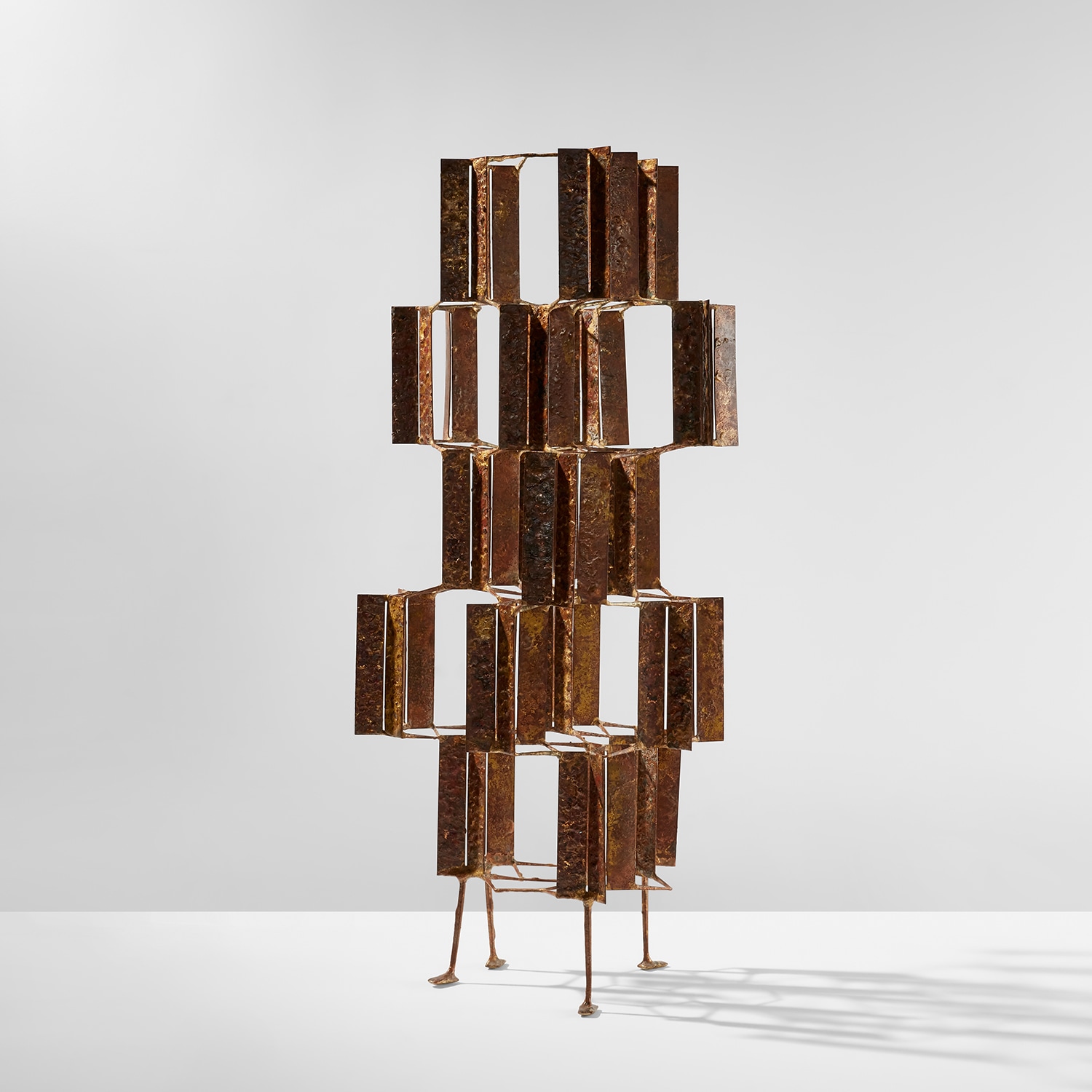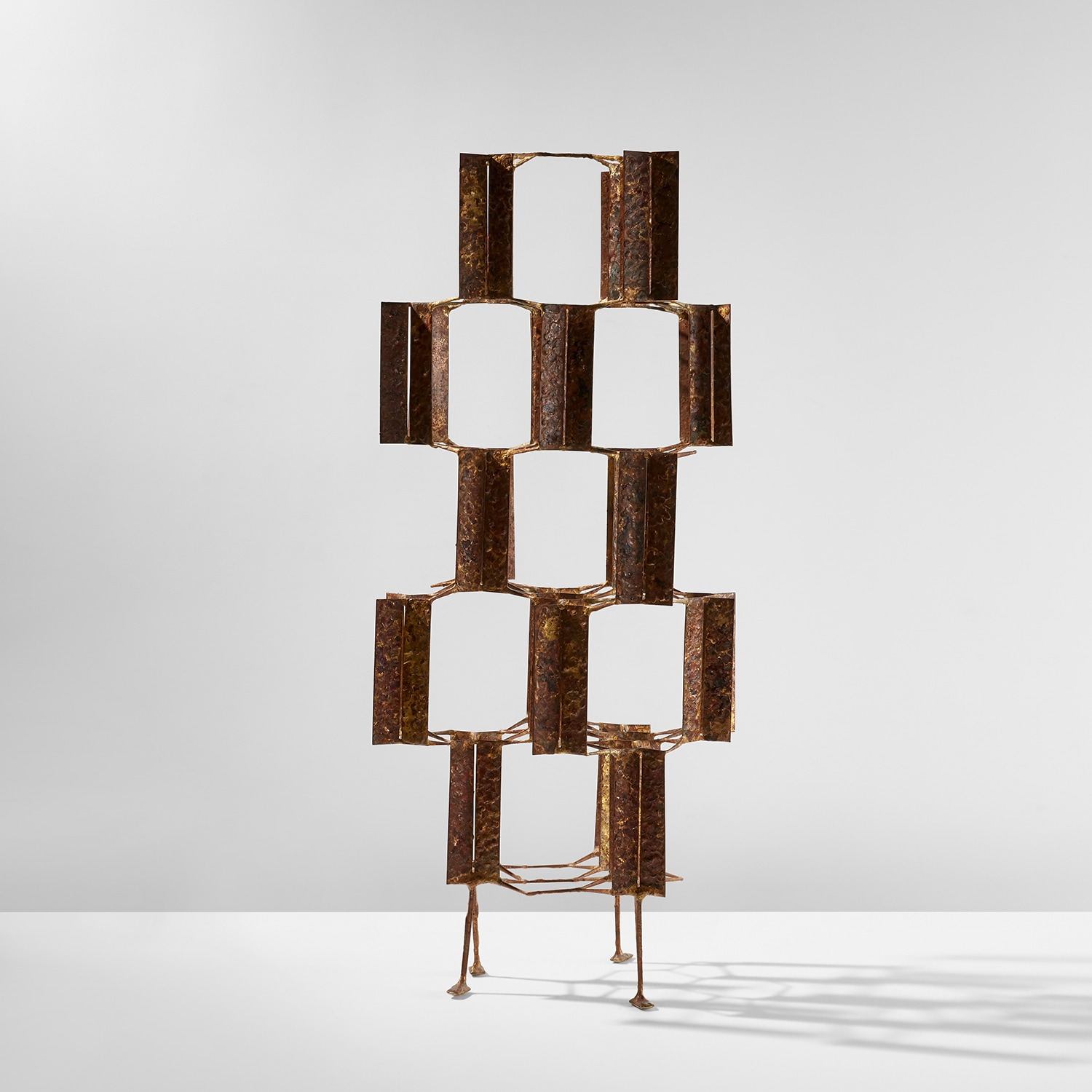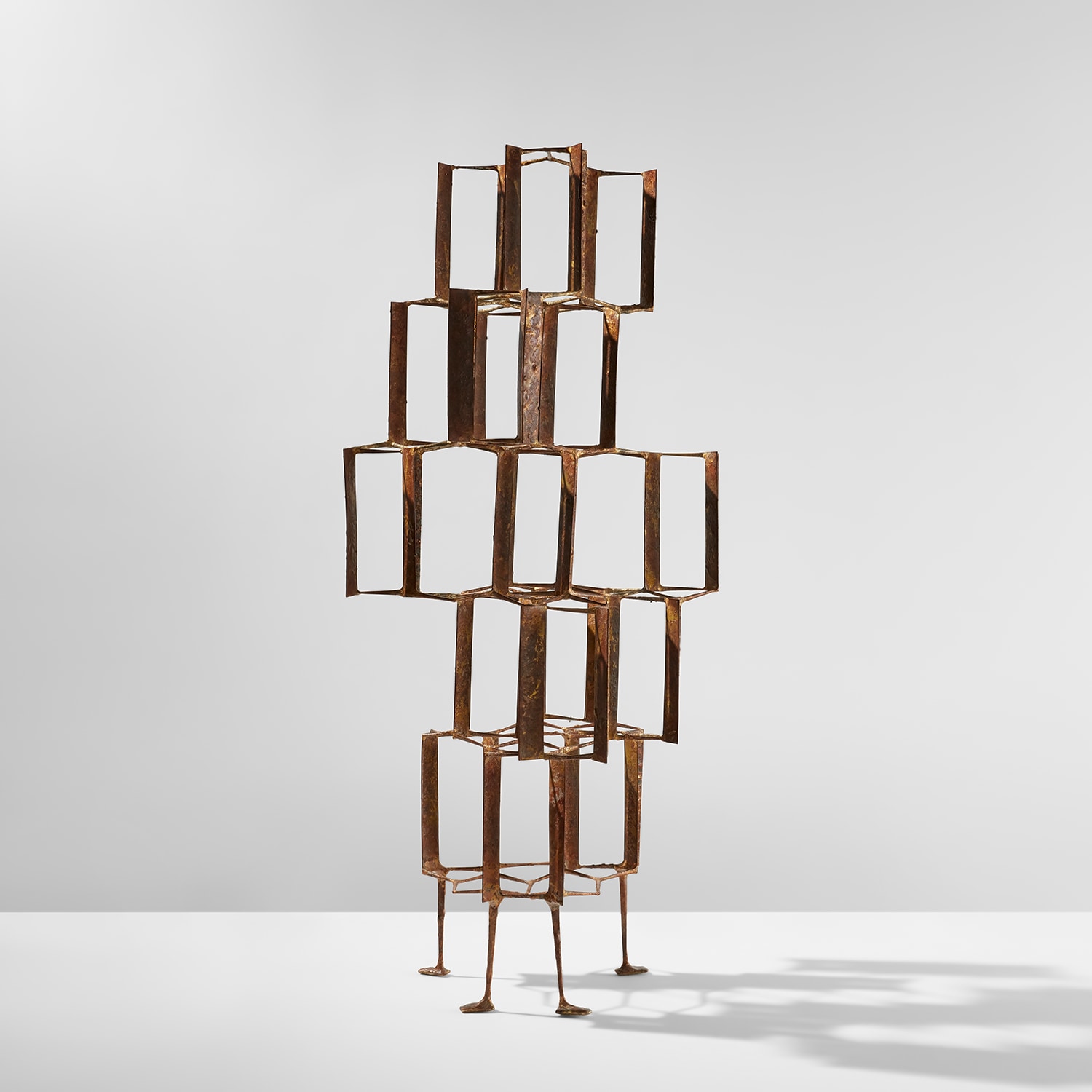









Property from a Private South American Collection
51
Harry Bertoia
Untitled (multi-plane construction)
circa 1958
Copper and brass melt-coated steel.
43 5/8 x 18 1/2 x 21 1/2 in. (110.8 x 47 x 54.6 cm)
Together with a certificate of authenticity from the Harry Bertoia Foundation.